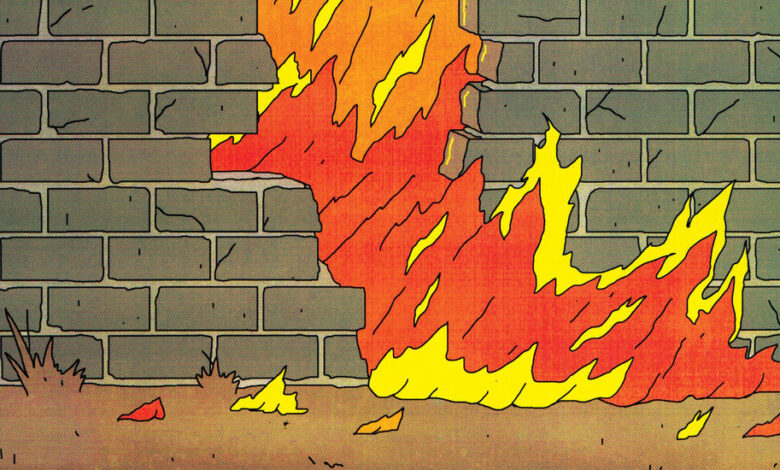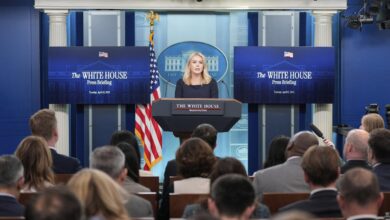Opinion | Biden Tasked Me With Fighting Antisemitism. Here’s What I’ve Found.

At the conclusion of my confirmation hearings before the Senate Foreign Relations Committee in 2022, I was approached by a member of the committee who asked which posed a greater threat, antisemitism emanating from the political left or the political right? The question did not surprise me. I had heard it often, long before President Joe Biden had nominated me to serve as the State Department’s special envoy to monitor and combat antisemitism, the position I held for the past three years.
I replied that it made little difference to me whence the antisemitism came, I was against it. I described myself as an “equal opportunity” hater of antisemitism. The senator who asked seemed satisfied with my answer.
As the new administration begins and I leave this position, I have come to see, more clearly, that this oft-debated left/right question — that is, which side is worse — often serves as a political smoke screen.
The problem is that many on both the left and the right fail to call out antisemitism when it appears on their side of the political spectrum: Too many on the left are silent when it rears its head on university campuses. Too many on the right fail to condemn the overt antisemitism expressed by white nationalists. When I encounter this, it is clear to me that the intent is not to fight antisemitism but to use antisemitism as a cudgel against political opponents.
This is far too narrow a prism through which to acknowledge, assess and call out this hateful phenomenon. In the past few years, having witnessed the continued harm of antisemitism worldwide, I have become convinced that these double standards, which reduce the fight against antisemitism to partisan bickering, obscure the far greater threat that is Jew hatred.
I now see the threat in a multitiered fashion. Antisemitism is, first and foremost, a peril to Jews, their institutions and their communities. Whether the attack is on a synagogue in Australia, soccer fans in Amsterdam or women in Kibbutz Re’im and at the Nova music festival near the Israel-Gaza border, Jews are the target. And this alone would make it a legitimate matter for governments to address seriously. But antisemitism poses a threat beyond the threat to Jews.
It also threatens democracy and the rule of law. The cornerstone of antisemitism is a conspiracy myth that holds that “the Jews” control the most powerful levers of society, in government, media, finance and more. This lethal belief posits that Jews seek to empower and enrich themselves at the expense of all others. One might be inclined to dismiss this outlandish myth as merely a wild fantasy. But it has served as the rationale for genocide. Millions have been murdered because of it.
Those who adhere to this conspiracy theory — who see power ceded, not to a legitimate government, but to a Jewish cabal — have lost faith in the rule of law and are looking for someone or some group of people to blame. They’re willing to believe that their votes do not help them, their leaders do not represent them and their institutions do not protect them. Their distorted worldview renders accountable, rules-based government an illusion.
We have repeatedly seen malign groups and governments using it as a means of deepening public division within societies and among countries. Russia has propagated antisemitic conspiracy myths to help justify its war against democratic Ukraine. Iran supports the terrorist groups Hezbollah, Hamas and the Houthis by helping them cultivate antisemitic ideologies to justify depraved violence throughout the region. Their primary goal may not be only to spread Jew hatred, but to use Jew hatred to sow societal divisions and make all of us doubt the political health and strength of the democratic world.
Anything that erodes the rule of law and undermines our national security must be confronted collectively. But when antisemitism is viewed through a left/right lens, we risk making it the subject of a partisan debate. In doing so, we obscure the global threat it poses.
My tenure at the State Department was dedicated to ensuring that world leaders commit to taking the politics out of this issue. In 2024, the United States led 38 countries and four international bodies in outlining the Global Guidelines for Countering Antisemitism. These guidelines represent a landmark global framework intended to tackle Jew hatred and outline 12 best practices for governments and civil society to identify and act against this scourge. The guidelines make clear: “avoid politicization.” By endorsing these guidelines, members of the international community vow to combat antisemitism not as a political issue, but as a moral and policy imperative.
And in 2023, the United States released our first National Strategy to Counter Antisemitism. The National Strategy calls on members of Congress from both parties to work together and condemn antisemitism in all its forms. As I reflect on my tenure, I am proud of the important partnerships that I have forged on both sides of the aisle. Together, we must recognize that antisemitism assaults the very principles that define our open, free and democratic society. Tackling the current surge of global antisemitism must remain a bedrock of bipartisanship.
When antisemitism leads to violence, as it all too often does, the question we must ask ourselves is: How will we — Jew and non-Jew, left and right, people of all persuasions and beliefs — unite and respond?
Deborah E. Lipstadt was the State Department’s special envoy to monitor and combat antisemitism abroad during the Biden administration. She is a professor of modern Jewish history and Holocaust studies at Emory University.
The Times is committed to publishing a diversity of letters to the editor. We’d like to hear what you think about this or any of our articles. Here are some tips. And here’s our email: [email protected].
Follow the New York Times Opinion section on Facebook, Instagram, TikTok, WhatsApp, X and Threads.




